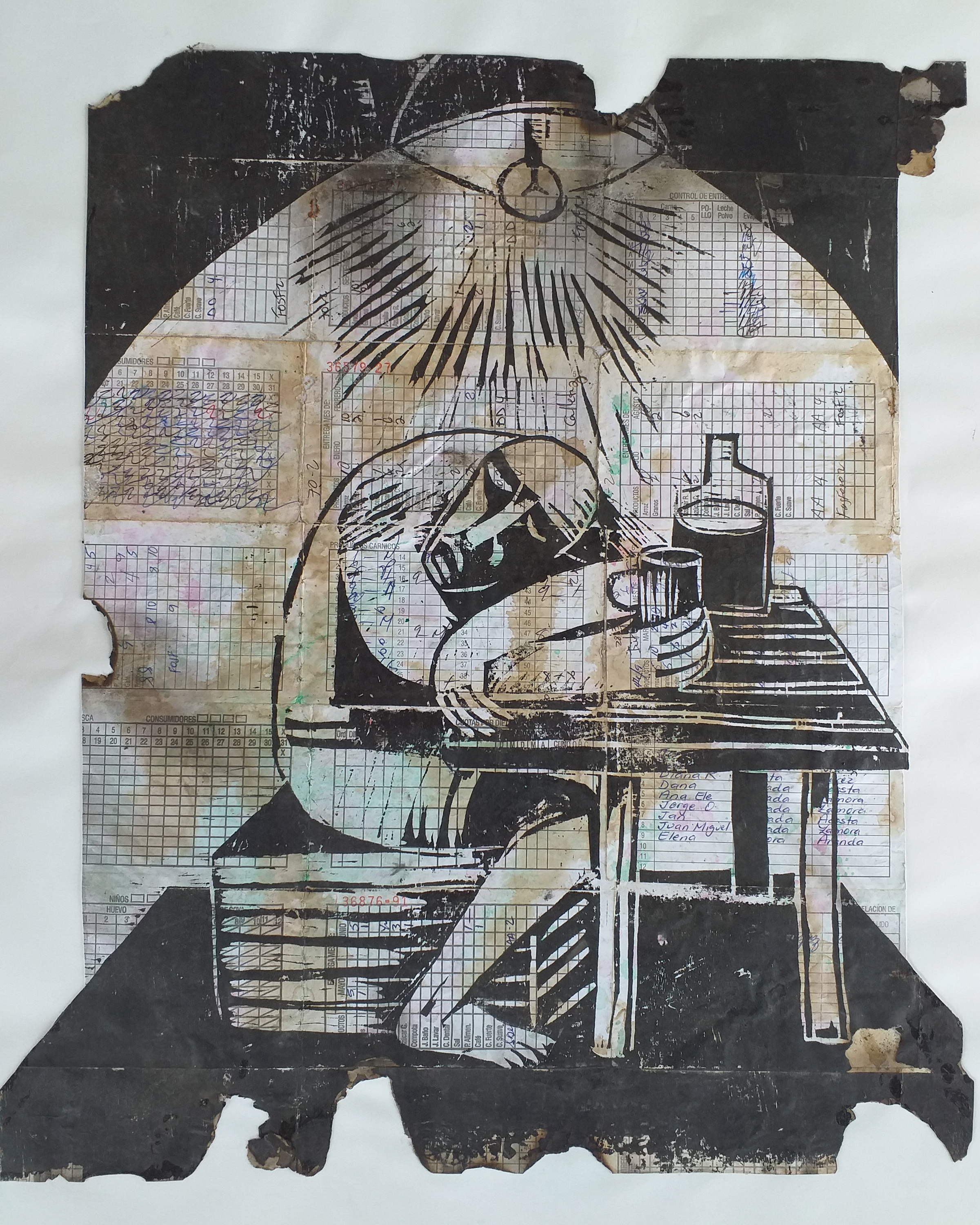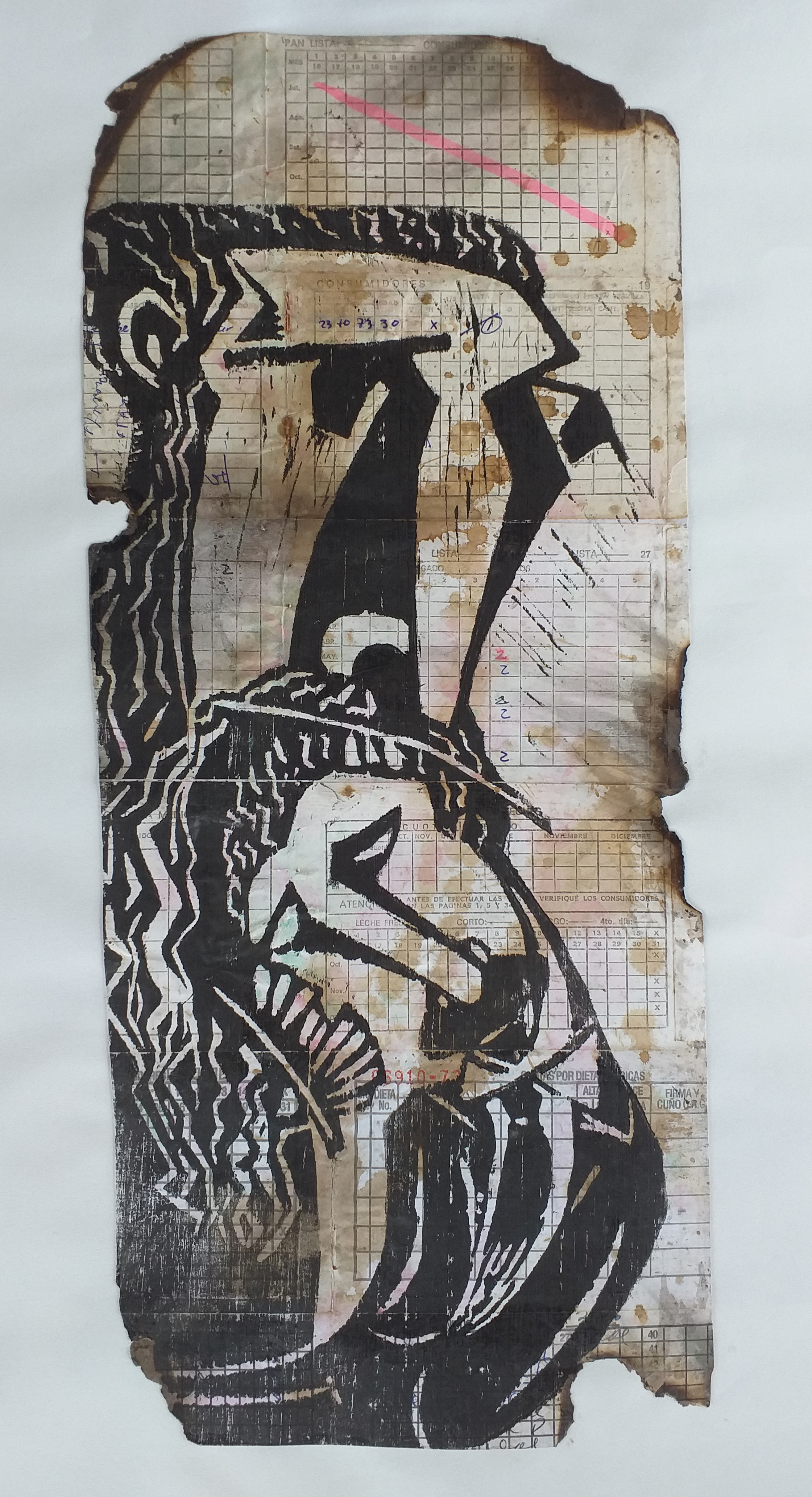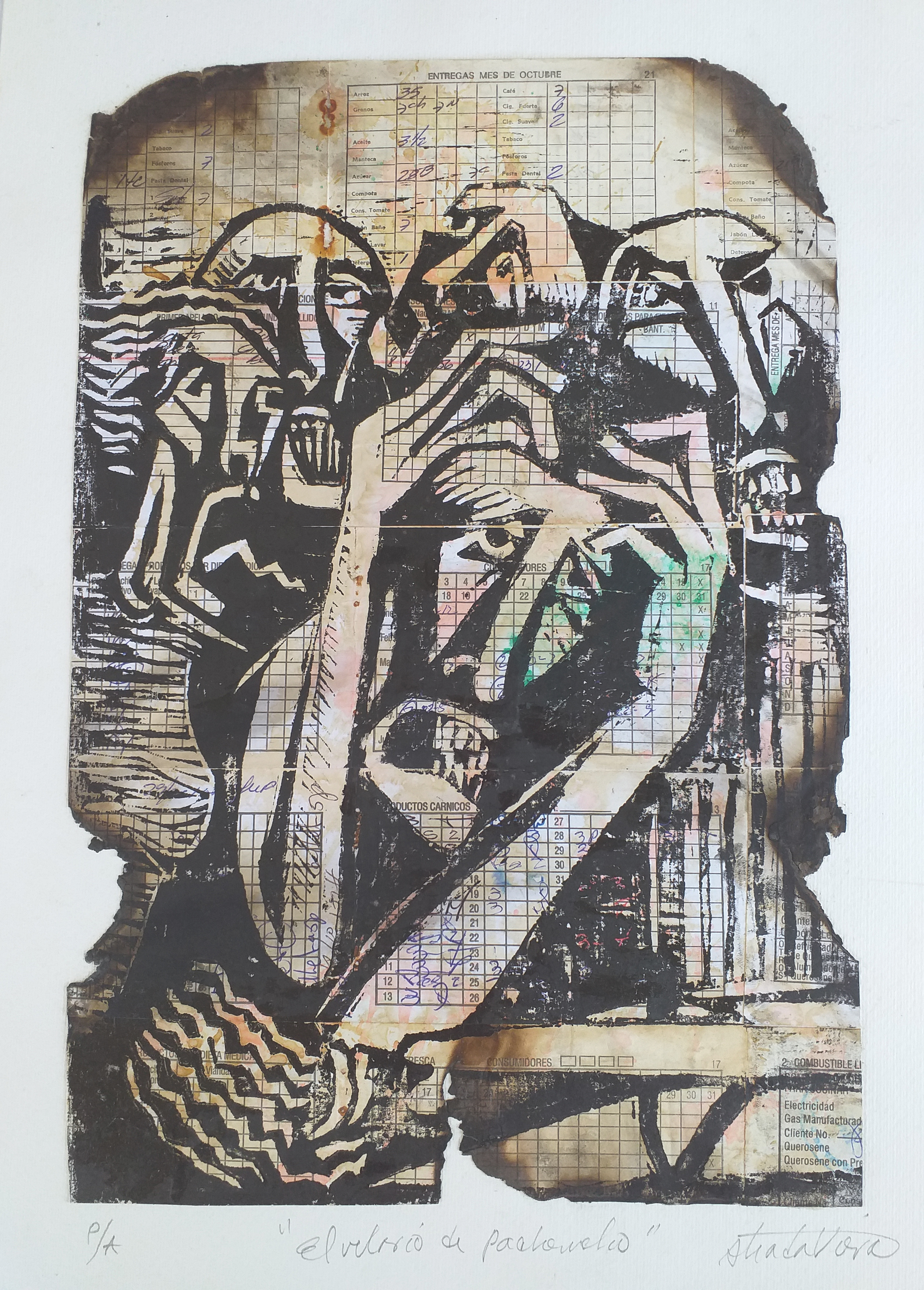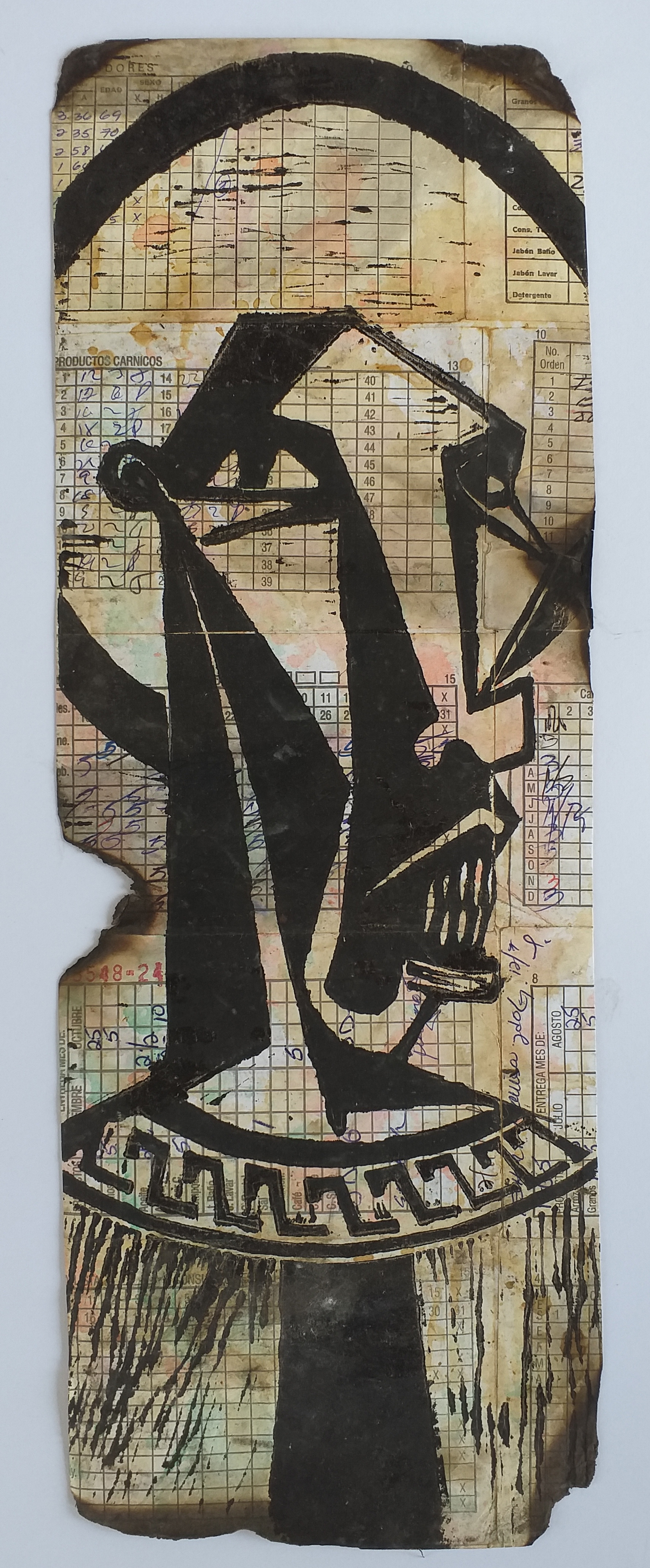Artist:
Guillermo Estrada Viera
Region:
Country:
Media/General:
About:
The work of Guillermo Estrada Viera is a creative combination of two completely unrelated traditions in Cuba: engraving and rations. Engraving has a long and rich history in Cuba, which has depended on a ration system for 50 years to manage the disbursement of goods through state-run stores–each person receives a ration book to manage purchases of basic, subsidized goods including chicken, eggs, rice, flour, beans, and soap.
Guillermo uses wood recycled from old furniture as the basis for his works. Inspired by traditional iconography, it is engraved with traditional woodcut tools, the self-taught artist learning his technique “through a trial and error process and taking as reference the work of the Cuban masters that I saw in museums, magazines, books, and posters.” The completed woodcuts are then inked and printed on used ration cards donated by family and friends. “In my work I use the used ration cards of my community and some of the products purchased with them. In this way, my work becomes a record of our daily lives,” says the artist. Each piece is treated with a by-product of the goods acquired with ration cards, such as oil, coffee, or kerosene.
Originally a sculptor, the lack of materials caused by the Cuban economic crisis of the 1990s forced Guillermo to turn to a new medium. He found that he favored woodcuts and now uses them to “address the conflicts, fears, and hopes of our contemporary society”, the ration cards making the art also a historical record carrying with it “the experiential weight of our community.” Guillermo’s work has been displayed at the Wifredo Lam Center for Contemporary Art in Havana and the Queens Museum of Art in New York City.





